Silambam is a weapon-based Indian martial art from Tamil Nadu in South India in the Indian subcontinent. This style is mentioned in Tamil Sangam literature.The World Silambam Association is the official international body of Silambam. It is closely related to Keralan kalaripayat and Sri Lankan angampora. It derives from the Tamil word silam meaning "hill" and the Kannada word bamboo from which the English "bamboo" originates. The term silambambu referred to a particular type of bamboo from the Kurinji hills in present-day Kerala. Thus silambam was named after its primary weapon, the bamboo staff. The related term silambattam often refers specifically to stick-fighting.
There are numerous styles of silambam but the nillaikalakki discipline is the most widespread style outside India, and is most well known in Malaysia. The styles differ from one another in grip, posture, foot work and length of the stick. Silambam may either be practiced for the purpose of combator purely for demonstration. Masters are called asaan while grand masters are addressed as periyasaan, iyan or annaavi.
Silambam uses long stick which is usually around 1.68 meters. The size of the stick associated with the user's height.It was supposed to reach the forehead about three finger from the top of the head, but different lengths usually used in different situations. A three-foot-long stick called "anguish kuchi" can be taken surreptitiously. Different training is required to use the stick with different length. Styles include holding the stick at one end, right hand nearly back and left hand about 40 centimeters away. This position allows the various movement of the body and stick including attack and parry movement. Silambam practitioner armed and unharmed using multiple movement of animals such as snakes, eagles, and monkeys
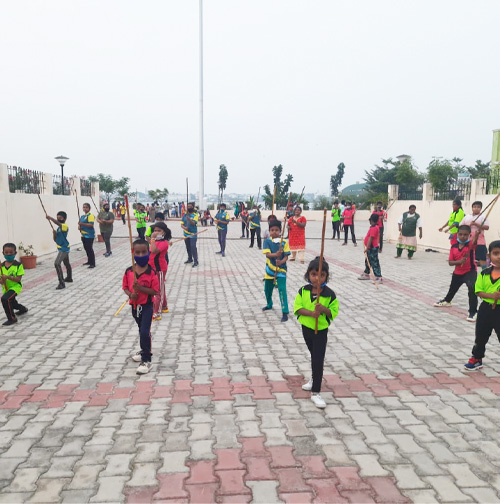
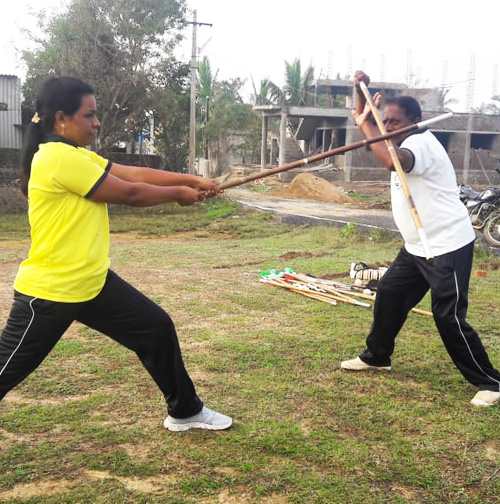
The chera, Chozha and Pandiya kings introduced this art in their warfare and made it compulsory for all the soldiers in the five wings of their military.
In the recent past, at the time of Pulidevan and Veera Pandiya Kattabomman (1760– 1799) this art was resurrected and was used in the fights against the British. So the British passed orders not to practice Silambam. As for the Tamils, Silambam is not only a weapon but also a traditional Martial art. So they practiced it for the sake of physical fitness. From the south India, Silambam spread over the rest of India and it called in different name in different part of the country. Silambam is called as Nedu Vadi in Kerala; karra saamu in Andhra Pradesh; Dhanta Varisai in Karnataka, Lathi in Uttar Pradesh; Marithani in Maharashtra; Dhal Lakadi in Gujarat; Patta Pachi in Punjab & Haryana; Kathga in Jharkhand and Bihar depending upon their language spocken in their area.
Silambam is a weapon-based Indian traditional martial art originated from Tamil Nadu in south India but also practiced by the traditional community of Malaysia, Singapore, Sri Lanka and Indonesia. The word silambam refers to the bamboo staff which is the main weapon used in this style. Other weapons are also used such as the Maduvu (Deer horn), Kathi (Knife) and Vaal (Sword). Unarmed Silambam called Kuttu Varisai, utilizes stances and routines based on animal movements such as the Snake, Tiger and Eagle forms.The length of the staff depends on the height of the practitioner.
It should just touch the forehead about three fingers from the head, although different lengths are used in different situations. It usually measures roughly 1.68 meters (five and a half feet). The 3 feet stick called sedikutchi can be easily concealed. Separate practice is needed for staves of different lengths. The usual stance includes holding the staff at one end, right hand close to the back, left hand about 40 centimeters (16 inches) away. This position allows a wide array of stick and body movements, including complex attacks and blocks. There are numerous sub sects in silambam like nagam-16 (cobra-16), Kallapathu (Thieves ten), Kidamuttu (goat head butting), Kuravanchi, kalyanavarisai (similar to quarterstaff), Thulukkanam, and so on. Each is unique and may differ from one another in grip, posture, foot work, method of attack, length of the stick, movement of the stick etc. The bamboo staff, one of the first weapons used in Indian martial arts, was in great demand with the visitors.
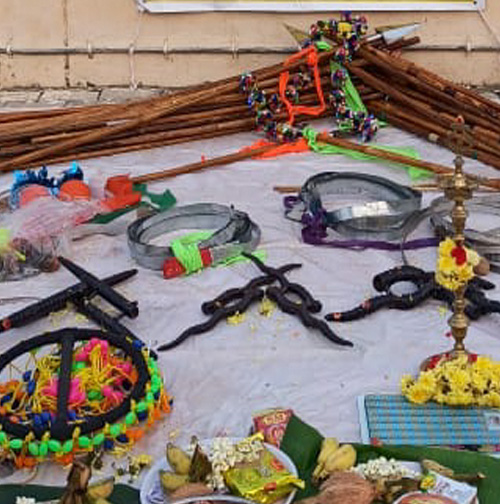
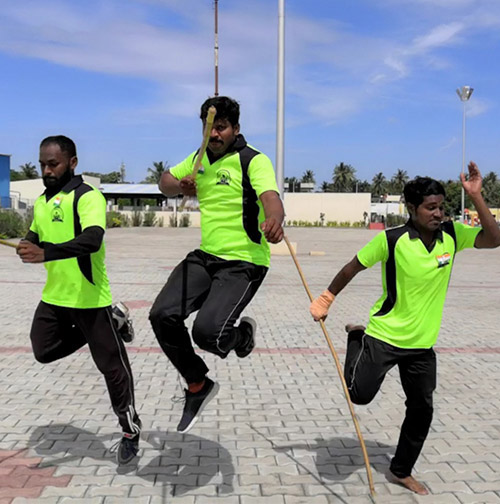
There are proven historical records which throw ample light on the fact that almost all the countries in the world practice Silambam (Stick Fencing) in some form or the other. Although it goes by different names in different states in India, Silambam Fencing justly qualifies to be called an Oriental Martial Sport. In an era of sedentary life style and desk bound work situations, Silambam, with its multitude applications, has rightly become an art of self-defence for both men and women alike. Endowed with eye catching swirls, swift movements and exciting maneuvers, it has developed into a highly skillful and technical sport fit enough for conducting competitions.
Now this game is practiced by school and college students in a big way. This will inculcate discipline, proper frame of mind and behavior among
Tamil Nadu Government has started evincing keen interest to develop this art and has included it in sports list for the Technical Studies (ie., Medical, Engineering, Law, Agriculture etc.,). Silambam Fencing has been introduced successfully as an "Introductory Game" in the "VII S.A.F Games" held at Chennai during the year 1995.
In Tamil Nadu at “Tamil Nadu Physical Education and Sports University”, Melakottaiyur, Chennai, PG Diploma, Diploma and Certificate courses are offered for Silambam Sport.
To promote and propagate such a culturally rich art form, tournaments are being conducted in various levels (i.e. District, Divisional, Zonal, State, National, Asia Level, Inter-National) and also catering to special segments (i.e. Women's Meet, Children's Meet, Educational Meet etc). for U 14, U 17 and U 19 (Sub-Junior, Junior, Senior) age categories for both men and women by us.
The enthusiasm shown by youngsters to learn this art is also on a rise in the recent years, not just in rural areas but also in cities.
"Silambam" is a good physical exercise. It not only enhances your physical fitness but also helps in promoting friendship and teaches a person patience, self discipline and politeness, and encourages love towards fellow humans," Though women have begun to come out of the closet, not many happen to be from the middle class section of society. Mostly the upper class women in urban areas are aware of their rights and asserting their individuality. A middle class woman perhaps still fears social backlash or is afraid of losing family support. Nonetheless, the Indian woman has taken up multiple roles as an entrepreneur or an entertainer, as a leader or an employee. Thus the women who learn Silambam art can develop self confidence, courage...
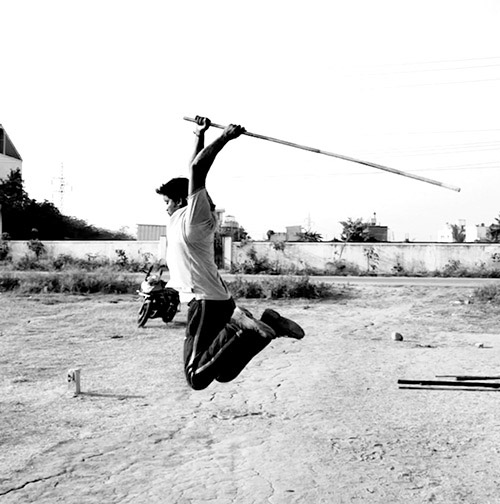
Indian Silambam Federation was formed in the year 1993 and registered under societies act in the year 1997 (Registration No,: 52 / 1997). Tamil Nadu Silambattam Association was formed in the year 1980 to propagate and popularize the Silambam as Game / Sport with well defined Rules and Regulations.
There are about 18 different styles of silambam practiced today. They are:
Silambam practitioner or regular training and Kai Silambam will get health benefits such as improving muscle flexibility, coordination arm with eyes, coordination foot and eyes, stabilize body posture, improve muscle endurance, increasing the speed of the body, relieving muscle and joint pain and resilience of hearth and lung